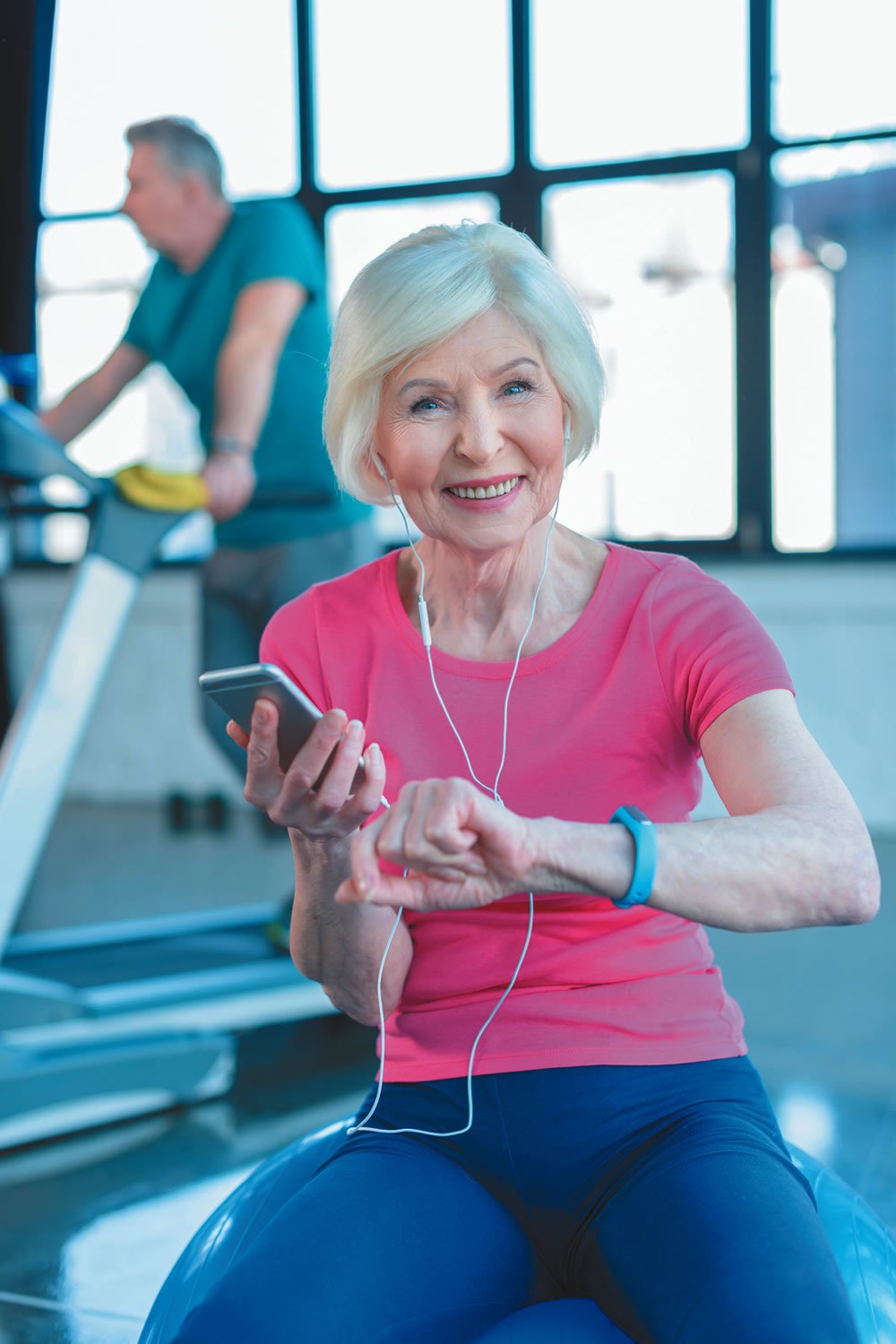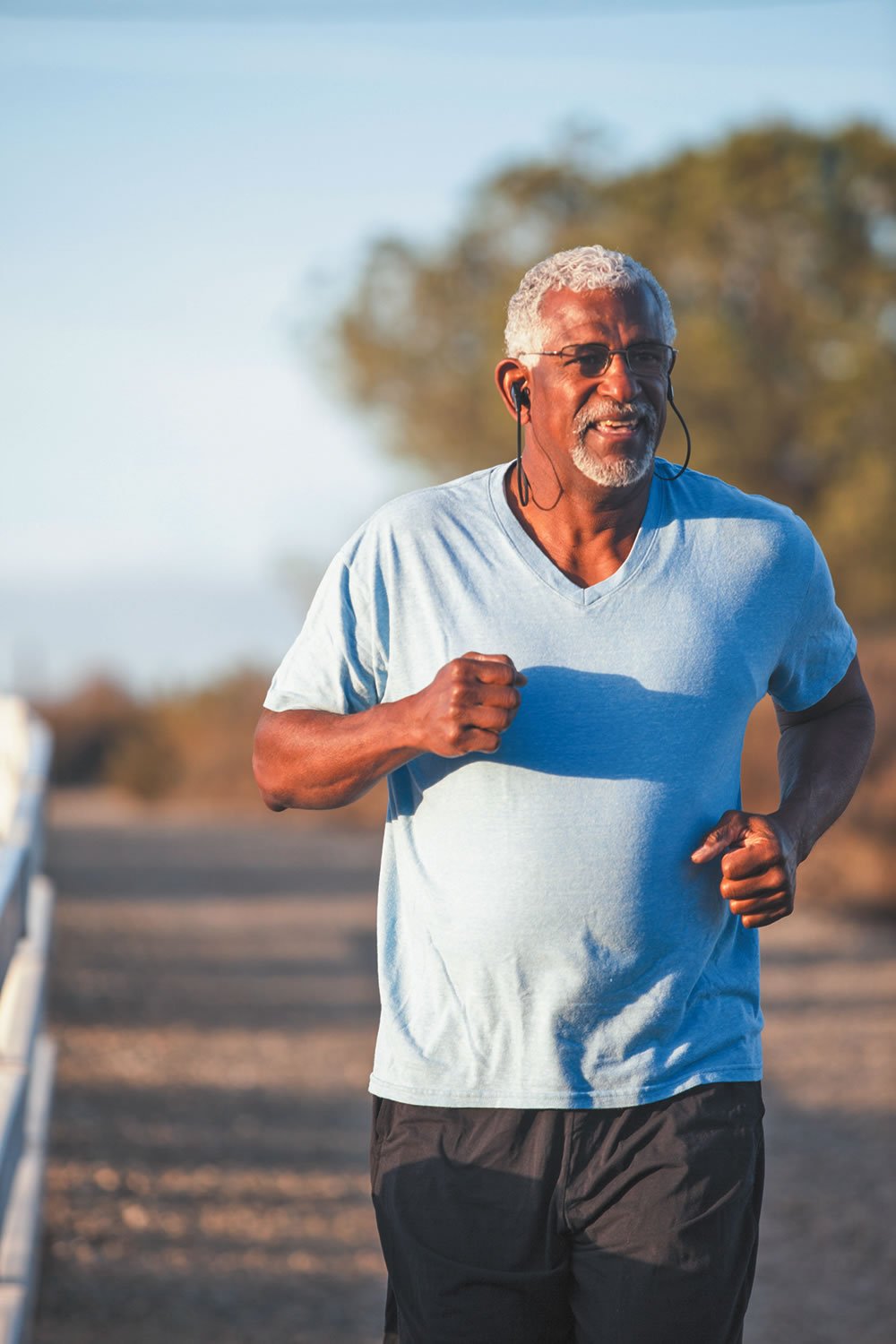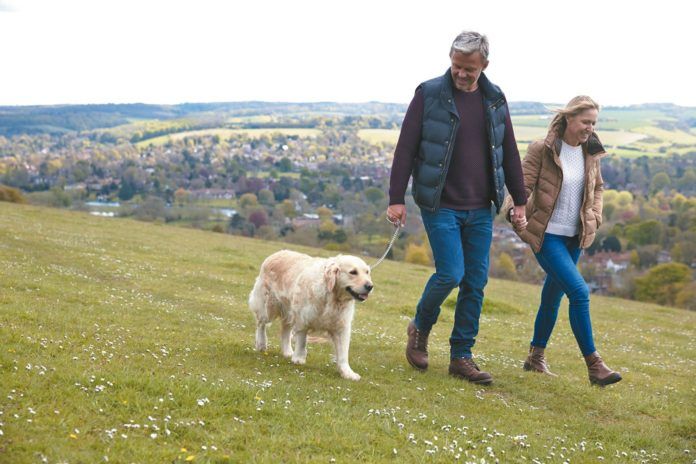Did you get your 10,000 steps today? Many people have adopted this daily walking goal to obtain the recommended amount of physical activity. The 10,000-steps-a-day number comes from the Japanese brand name of a pedometer manufactured in the 1960s, the “10,000 steps meter.” In the Fitbit era, counting daily steps remains appealing to many people as a source of motivation.
In the US, adults are urged to get the equivalent of 150 minutes per week of moderate intensity exercise. Walking is a popular way to meet those recommendations, particularly in older adults or people who are relatively physically inactive.
Although 10,000 steps is a worthy challenge, aiming for more exercise than you normally get—unless you are one of the few who regularly trains for marathons or triathlons—comes with benefits. Any amount or type of physical activity adds to your daily goal. Regularly taking the stairs instead of the elevator, or parking farther away from your destination, can make a measurable improvement in your health.
A recent study in the Journal of the American Heart Association found that the benefits of walking on longevity were equivalent whether people got their steps in one long walk, a few shorter ones, or even brief walk breaks of a few minutes—as long as the physical activity was regular.
Preserving Mobility: Among the most important benefits of walking for older adults is preserving physical mobility—the ability to walk without assistance. In 2014, a study involving Tufts researchers called Lifestyle Interventions and Independence for Elders (LIFE) trial provided evidence for the benefits of physical activity in older adults at risk of immobility and disability and other associated health problems.
“This study, for the first time, showed conclusively that a regular program of physical activity can preserve independence among older men and women,” says Roger A. Fielding, PhD, director of the HNRCA Nutrition, Exercise, Physiology and Sarcopenia Laboratory, who led the Tufts portion of the study.
The LIFE trial was designed to test the ability of physical activity to prevent major mobility disability, defined as the inability to walk for about a quarter-mile (400 meters) within 15 minutes, without sitting and without the help of another person or walker. Use of a cane was allowed. The study involved 1,635 men and women, ages 70 to 89, at 8 universities and research centers across the country, including Tufts.
On a practical level, the walking test gauges a person’s general fitness to perform ordinary activities like shopping, household chores and travel. Not being able to pass the test is a harbinger of future immobility.
Participants were relatively sedentary at the start of the study, having reported less than 20 minutes per week of physical activity in the previous month. The volunteers were randomly assigned to either weekly health education classes with 10 minutes of gentle stretching, or to a program consisting of exercises for strength, flexibility and balance, as well as walking. Participants were told to set as their goal 30 minutes a day of walking at moderate intensity.
Over the average 2.6-year study period, participants in the exercise program were 28% less likely to develop major mobility disability, compared with the control group that just received health education. Increased regular exercise was particularly potent in participants who started the study with the lowest level of physical functioning.
“We think that one of the reasons older people lose their independence is because of some problem they have with their muscle function,” Fielding explains. “Therefore, if you can design an intervention that can help slow the rate of muscle loss or restore some of the muscle function, it may help to prevent individuals from ultimately becoming disabled. We’ve shown that pretty well with exercise.”
How Many Steps to Health? More recently, Fielding used the data from the LIFE study to pin down the amount of physical activity it takes to prevent disability in the at-risk individuals who participated in the LIFE trial. Is 30 minutes a day of walking and other exercise the required buy-in to prevent immobility?
Fielding and his colleagues reanalyzed the LIFE data to see what impact incremental “doses” of physical activity over the first two years of the trial had on physical function (based on tests of balance and leg strength) and walking speed. They found that an increase in physical activity of just over 45 minutes per week reduced the chance of mobility disability by about 70%. That’s equivalent to a single session of exercise training used in the LIFE trial.
It all adds up to this: Even people who are relatively sedentary and start late in the game can benefit from increasing physical activity. Walking is a great entry-level physical activity—simple, free and safe unless you have a balance problem or other risk factor for falling. A brisk walk, combined with a light aerobic workout and strength training, can increase the odds of staying active and independent with aging.
“Understanding the minimal dose of physical activity required to improve physical function and reduce the risk of disability may inform future public health recommendations about physical activity for older adults,” Fielding says. “A reduced risk of disability can be seen with substantially less physical activity than is currently recommended for most inactive older adults.”


Nutrition + Exercise = Health
Exercising regularly can substantially lower the risks of major chronic diseases and conditions. How does diet and nutrition fit in? Tufts experts emphasize that a healthy eating pattern is a necessary complement to exercise.
“It’s important to also consider healthy dietary recommendations along with physical activity for optimal health.”
— Roger A. Fielding, PhD, director of the HNRCA Nutrition, Exercise, Physiology and Sarcopenia Laboratory
“A healthy lifestyle includes a high quality diet and regular physical activity. Both are important. A high-quality diet ensures meeting nutrient needs and fueling the body for an active lifestyle. Regular physical activity is important for maintaining our muscles and respiratory capacity. We should never think in terms of one or the other. Working together, they help us achieve and maintain a healthy body weight, and lower our risk for chronic diseases associated with aging.”
— Alice H. Lichtenstein, DSc, director of Tufts’ HNRCA Cardiovascular Nutrition Laboratory and executive editor of Tufts Health & Nutrition Letter.
All forms of physical activity countnot just structured workouts. Here are some ways to add more physical activity to your day:
-Walk rather than drive to destinations you can reach on foot within 10 minutes (which will ensure walking a mile there and back).
-Park wherever you first see a space at your destination, instead of driving around to find the closest one.
-Take the stairs instead of the elevator.
-Get up to turn the television on and off or change channels manually rather than using the remote.
-Do stretches and exercises, or pedal a stationary bike, while watching television or listening to the radio.
-Join a walking group in the neighborhood or at the local shopping mall. Recruit a partner for support and encouragement.
-At work, replace a coffee break with a brisk 10-minute walk.
-Cut the grass with a push mower instead of a gas or electric mower.
-When traveling, stroll around the airport, train or bus station instead of sitting.






















What you have written closely resembles my father’s philosophy. Dad grew up on a farm, so getting exercise was no problem. Dad was highly active, anyway, never sat still for long. He was skiing until the winter before he died at the age of 67 from a cancer. He was a pipe organ builder, an activity requiring a great deal of physical activity. He used to have to pass by the work benches of the women who assembled parts. Of course, he would hear their comments from time to time. Usually the women were complaining about some physical aspect of their lives which made them miserable. Dad tired of their griping. He would tell them, “Quit your belly achin’! Get up, an’ do somethin’!” That agrees with your advice, “Get up, an’ do somethin’!”
There are literally hundreds of “guides to better health for elders” appearing in magazines, on the internet, on TV radio, etc.. I think this article is the most useful, concise and common sense statement of these issues and recommended strategies that I have seen. Thank you. Tufts is first class in this and many other ways.
Ron Sanfield
Andover, MA
I think some thoughts on the 10,000 step advice is in order. For example, I walk two dogs every day.
I also wear an Apple Watch which records data. For example, today, according to the watch, I exercised for 34 minutes, walked 4525 steps and travelled a distance of 2.08 miles. The 10,000 step goal would have taken way over an hour and simply was not practical. Nevertheless, at age 83 my blood pressure is normal and my cholesterol runs about 150. So, how necessary is the 10,000 step requirement?
As a dietitian, physician, and medical Director of a rehabilitation hospital, I completely agree with your advice. I would share the story of a patient who became a dear friend and role model. He was a PhD in chemistry and physics and had to see me because of knee pain at age 88. I said that some of his issue was most likely related to some age associated arthritis at which he said “you don’t understand, I am in a cross country ski race this weekend“. After injections to his knees, he went on to win the race that weekend. He then had to stop aggressive downhill skiing at age 92 and had to stop riding his bicycle because of balance problems at age 96. He died young at age 96 1/2.
“Get up to turn the television on and off or change channels manually rather than using the remote.”
With well over 2000 channels, the above stay active hint to change channels manually is impossible & ridiculous. Otherwise article is excellent and most helpful.
Eighty one years old and active in Simsbury CT